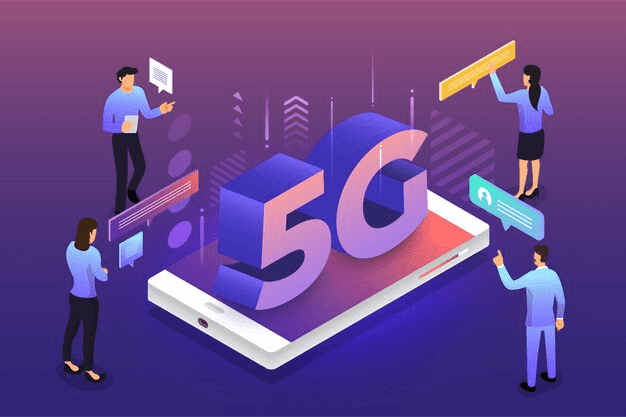Unlocking 5G Potential with Cloud Software Innovations
The rollout of 5G technology has heralded a new era in connectivity, promising faster speeds, reduced latency, and an unprecedented capacity to connect multiple devices simultaneously. However, to fully harness the potential of 5G, innovations in cloud software are essential. By integrating 5G with cloud-based solutions, businesses can unlock a world of opportunities, enhancing their operations, improving customer experiences, and driving growth. In this blog, we will explore how cloud software innovations are pivotal in realizing the full potential of 5G.
The Synergy Between 5G and Cloud Computing
5G technology and cloud computing are two sides of the same
coin. While 5G enhances connectivity, cloud computing offers the necessary
infrastructure to support the applications and services that utilize this
connectivity. This synergy is vital for various industries, including
healthcare, transportation, manufacturing, and entertainment.
The Impact of 5G on Cloud Software Solutions
Enhanced Data Processing
5G networks can transmit data at astonishing speeds,
enabling real-time processing and analytics. This speed is crucial for
cloud-based applications that rely on large data sets, such as artificial
intelligence (AI) and machine learning (ML). With 5G, cloud software can
process data faster, resulting in more accurate predictions and insights.
Improved User Experiences
With the combination of 5G and cloud software, businesses
can deliver enhanced user experiences. For instance, in the gaming industry,
cloud gaming platforms can stream high-quality games without lag, thanks to the
low latency of 5G. Similarly, augmented reality (AR) and virtual reality (VR)
applications can function seamlessly, offering users immersive experiences that
were previously unattainable.
Scalability and Flexibility
One of the most significant advantages of cloud software is
its scalability. With 5G, businesses can expand their operations without the
need for extensive on-premises infrastructure. They can quickly deploy new
applications and services that leverage 5G connectivity, enabling them to
respond to market demands swiftly.
Key Innovations in Cloud Software for 5G
Several innovative cloud software solutions are emerging to
complement the capabilities of 5G technology. Here are a few key innovations
that are making waves:
Edge Computing
Edge computing is a game changer for 5G, allowing data
processing to occur closer to the data source. By minimizing latency and
bandwidth usage, edge computing enhances the performance of cloud applications.
This is particularly beneficial for applications that require real-time data
processing, such as autonomous vehicles and smart cities.
5G Network Slicing
Network slicing allows multiple virtual networks to be
created on a single physical 5G network. Each slice can be tailored to meet the
specific needs of different applications or users, offering customized
experiences without compromising performance. This innovation is essential for
industries like healthcare, where certain applications may require higher
reliability and lower latency.
Cloud-Native Applications
Cloud-native applications are designed specifically to take
advantage of cloud computing frameworks. These applications are inherently
scalable, resilient, and agile, making them ideal for deployment in a 5G
environment. By leveraging microservices architecture, businesses can develop
and deploy applications quickly, allowing for rapid innovation and iteration.
Real-World Applications of 5G and Cloud Software Innovations
The integration of 5G and cloud software has led to numerous
real-world applications that are revolutionizing industries. Here are a few
examples:
Smart Cities
Cities around the world are adopting smart technologies to
improve urban living. With 5G and cloud software, cities can integrate data
from various sources, including traffic cameras, public transport systems, and
environmental sensors. This data can be analyzed in real-time to optimize
traffic flow, reduce energy consumption, and enhance public safety.
Healthcare Innovations
In healthcare, 5G-enabled cloud solutions are transforming
patient care. Telemedicine services can provide real-time consultations with
high-definition video and low latency, improving patient outcomes.
Additionally, wearable devices can transmit vital health data to cloud systems
for real-time monitoring and analysis, allowing for timely interventions.
Autonomous Vehicles
The automotive industry is one of the most promising sectors
for 5G and cloud software integration. Autonomous vehicles rely on real-time
data from various sources to navigate safely. By leveraging 5G connectivity and
cloud computing, these vehicles can process data from their environment and
communicate with each other, improving safety and efficiency on the roads.
Conclusion
The potential of 5G technology is immense, but it is the
innovations in cloud software that will truly unlock its capabilities. By
enhancing data processing, improving user experiences, and providing
scalability, cloud solutions are critical to maximizing the benefits of 5G. As
we continue to see advancements in technologies such as edge computing, network
slicing, and cloud-native applications, businesses can leverage these tools to
stay ahead of the curve.
To keep up with the rapidly evolving landscape of 5G and
cloud software, click here to find out more about the
latest trends and innovations. By embracing these changes, businesses can
position themselves for success in a connected world, ensuring they are
well-equipped to meet the demands of the future.




Comments
Post a Comment